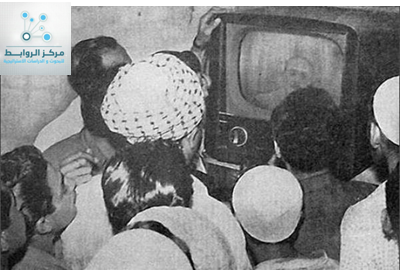When we talk about television we have to mention the history of “Iraqi television” because it has a great impact on the Iraqi people and they recall this event proudly being the oldest among Arab TV, and is the first Arabic-language television broadcast in the Middle East in black and white, considered a qualitative shift in radio and television broadcasting, it has won the attention and joy of the Iraqi people.
Television was not known before 1954 in Iraq or the Middle East. Iraqi television was the first Arab-language television broadcast in the Middle East on 2 May 1956. It was initially broadcast to Baghdad and it includes in the late 1960s, Basra, Mosul and Kirkuk. The first director of the Iraqi television was “Adnan Ahmed Rasim al-Nuaimi”, and he had a diploma in audio-visual and master of art education from the US University of Indiana.
The story started with the establishment of Iraqi television a year earlier when a German company (Bayer) attended a trade show for electronic devices in Baghdad. It happened to be among its exhibits , Broadcasters for Television broadcasting , a black and white television broadcast with a small studio equipped with photography supplies and a number of television viewers which draw Iraqis’ attention and surprised them that they had not seen or heard of before. After the end of exhibition, the company decided to give the exhibited articles to the Royal Government of Iraq, which was opened by His Majesty King Faisal II and Iraq became the first country in the Middle East to have a television station. On the second day of May, on the anniversary of the birth of His Majesty King Faisal II, the opening ceremony was held in a wide square in the courtyard of the Iraqi Radio House where many trees were erected. Baghdad TV sets were installed at the radio station in Al-Banakla. The four-hour broadcast was limited to news, music, and TV series such as the series of Robin Hood and the series Montecresto and the songs of the singers: Afifa Iskandar , Nazem al-Ghazali and Yusuf Omar.
The sky of Baghdad was decorated, on this day, with a new electric mast rising in space to a height of 140 feet to register a new page in the history of Iraq as a symbol of progress and development. It is the mast of the Iraqi television station inaugurated by His Majesty King Faisal II. Iraq became the first country in the Middle East to have a station that was lit by electric lamps. It looked like a glowing mass of bright colors in the middle of the darkness and in front of the station building and around it crowds of men, women, youth and children stood up waiting for a party opening
Among the most prominent broadcasters and program presenters:
– Adil Nawras
Hafiz al-Qabbani
-Qassem Noman al-Saadi
– The scientist Mustafa Javad and his famous program Say and don’t say in the sixties
-Amo Zaki presenter of children programs
-Sami Al-Rubaie : Drawing
– Muayad al-Badri – the sport program in a week
-Kamel al-Dabagh
– Khirya Habib – art program
– Farqad Malakou – Nessma from my country (breeze from my country)
– Nasreen George – Children’s Cinema Program
-Khameel Mohsen – Visit Program
-Khaled Jabr : art program
Fattouh Mustafa : home affairs Program 1961
Abdel Salam Ibrahim Naji weekly program episodes – who is the killer 1961
– Mohammed Ali Karim
– Nadhim Butrus
-Slim al-Maaroof
-Muqdad Murad
-Gazi Faisal
– Ashmoun Matti
– Rushdi Abdul Sahib
– Nehad Najib
– Akram Mohsen
– Salih Al-Rubaie
And other names have had a significant impact on the progress of Iraqi television include artists and directors whose contributions were respected and appreciated by the Iraqi public, as well as the names and personalities of broadcasters and television announcers who will not be repeated due to their elegance and wonderful media personalities.
Iraqi TV consists of the following sections:
1 – Department of news and political programs
2 – Department of cultural programs
3- Department of Drama
4 – Department of miscellaneous
5-Department of Film and Cinematography
6-news section
7 – Department of studios and decoration
8. Coordination and Follow-up Section
9 – Department of exchange and coordination and commercial advertising
10 – Department of news and documentaries
11. Library of films
12-Department of Administration
• In 1976, the first color transmission on channels 7 and 9 began on a small scale.
* Algeria was the second Arab country to follow Iraq, followed by Egypt, where the establishment of a television channel was delayed until 1959, although the decision to start broadcasting Egyptian television was taken in the mid-fifties.
In short, Iraq’s television has witnessed various stages and major political and social events, beginning with the monarchy and the republic in its major changes from 1956 to 2003 when Baghdad was occupied by US forces and began to re-broadcast to restore the smile and life to the great people of Iraq and continues to strive to present Programs in order to occupy the proper place among the nations.
Maryam Mudhaffar Al-kasairi
Translated by : mudhaffar al-kusairi
Media Studies Unit
Rawabet Center for Research and Strategic Studies

